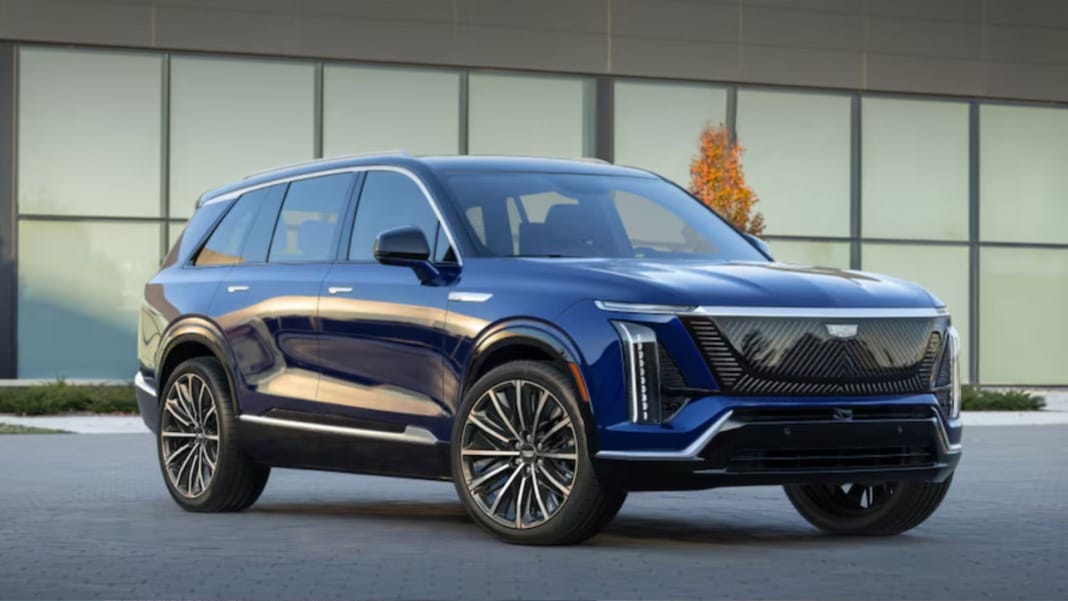On September 18, Cadillac officially unveiled the 2026 Vistiq SUV, a luxurious three-row electric SUV that promises a 300-mile range on a single charge. The starting price is US$80,185, placing it within Cadillac’s high-end EV lineup. The Vistiq joins Cadillac’s expanding electric family, which includes models like the Lyriq, Optiq, Escalade IQ, and the ultra-luxury Celestiq. This new addition highlights General Motors’ (GM) dedication to a diverse EV portfolio following a surge in EV sales supported by enhanced production and a versatile lineup.
Production will begin in early 2025 at GM’s Spring Hill, Tennessee, plant, where the smaller Lyriq is assembled. The Vistiq may qualify for federal tax incentives. However, this potential benefit depends on continuing such credits under future government policies. The Vistiq aims to attract buyers looking for an upscale yet slightly more affordable alternative to the flagship Escalade IQ.
Design and power: Embracing style with strength
The Vistiq borrows many design cues from the popular Lyriq, including flush door handles, a diamond-cut pattern on the faux grille, and subtle indents on the side panels. The front and rear lights resemble those of the Lyriq, offering a modern aesthetic. However, the windshield is more streamlined, echoing the look of the Escalade IQ. This design is not just about style; it’s part of Cadillac’s aim to ensure aerodynamic efficiency and modern elegance across its EV range.
The Vistiq is powered by a robust 102 kWh battery pack delivering 615 horsepower and 650 pound-feet of torque. Although this is less than the 200 kWh battery of the Escalade IQ, the Vistiq provides impressive acceleration and a smooth, responsive driving experience. Dual motors power the vehicle, and an active rear-steering system adds to its agility, which is especially useful for tight turns. Buyers can opt for 23-inch wheels, enhancing visibility but potentially raising concerns over pedestrian safety due to the SUV’s height.
Cutting-edge tech: Google-powered infotainment and bidirectional charging
One standout feature of the Vistiq is its Google-powered infotainment system. With Android at its core, this system includes built-in Google Maps navigation, access to apps through the Google Play Store, and Google Assistant integration. Notably, Cadillac has excluded support for Apple CarPlay and Android Auto, which has sparked mixed reactions from consumers. Cadillac’s software team, however, stands by the decision, believing the fully integrated Google experience offers an advantage.
Cadillac is also introducing a new feature with the Vistiq: bidirectional charging or vehicle-to-home (V2H) capability. With the proper setup, owners can power their homes using the Vistiq’s battery, a handy option during power outages. GM’s energy division has even started offering a V2H kit, including a home charger and enablement kit, for around US$7,300. This setup allows homeowners to use their EV battery as a backup energy source.
Cadillac has yet to release specifics on fast-charging speeds or the time required to charge from 10% to 80% for on-the-go charging. Final testing is underway, and Cadillac plans to confirm these details soon.
Cadillac is equipping the Vistiq with advanced safety features, including infrared-powered night vision for enhanced visibility on dark roads, OnStar collision assistance, and a suite of driver alerts. These features align with Cadillac’s emphasis on passenger safety and provide added peace of mind for drivers.
At launch, the Vistiq will be available in three trims: Luxury, Sport, and Premium Luxury, catering to different tastes and style preferences. 2025 Cadillac will add a Platinum trim, offering enhanced performance elements and new interior and exterior colour options. Cadillac aims to give each buyer a personalised vehicle experience, allowing them to choose the trim that best suits their style.
Cadillac’s EV future faces policy challenges
The release of the Vistiq is pivotal for Cadillac and GM. While the Lyriq has performed well in the compact luxury EV market, helping to boost Cadillac’s sales, the EV landscape may soon shift. The federal tax credits that currently benefit many EV buyers might be at risk, as the president-elect has announced plans to roll back EV incentives. These policy changes could impact Cadillac’s ambitious goal of achieving a zero-emission lineup and a profitable EV business if implemented.
The Vistiq offers Cadillac customers an attractive new option in the high-end EV market. With impressive range, innovative technology, and stylish design, it’s set to be a competitive model. However, the challenge remains: GM and Cadillac’s continued success in the EV market may rely heavily on supportive government policies.





